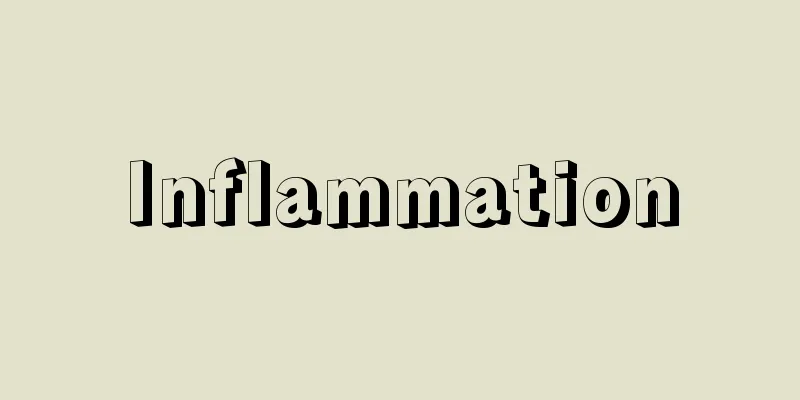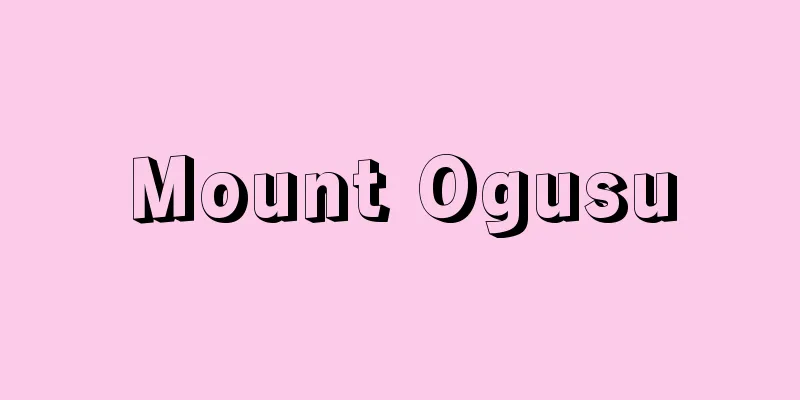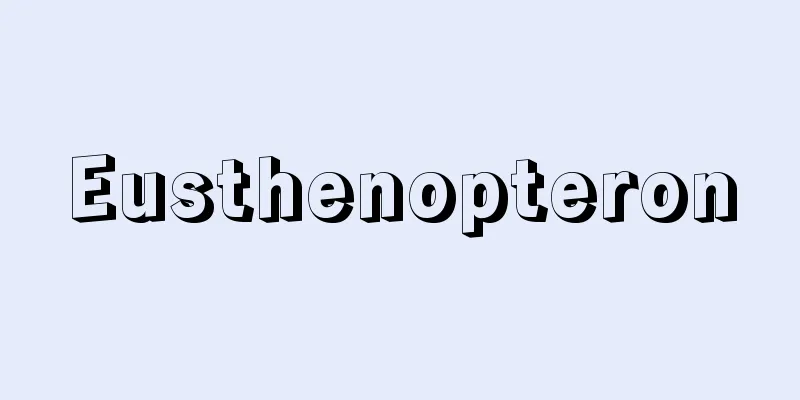Houseido Kisanji - Houseido Kisanji

|
Year of death: Bunka 10.5.20 (1813.6.18) Year of birth: 20th year of Kyoho, leap year 3, 21st (1735.5.13) A writer of kibyōshi, sharebon and kyōka from the Edo period. His real name was Hirasawa Tsunetomi, commonly known as Heikaku, and his kyōka names were Asagi Urinari and Tegara Okamochi. He used the pen name Michijarō Maa for his sharebon and Han Changling for his kyōka poetry. His play pen name, Houseidō Kisanji, was "Hosedo Kibariji," which refers to the use of a samurai's high toothpick. He served as the caretaker of the Akita clan's Edo residence. Showing the precocious talent of a samurai born in Edo, he loved acting from a young age, learning ranbu and tsuzumi. He was a haiku poet, and later took the pen name Tsukenari under Baba Noriyoshi, the second Kamenari. His first comic work is said to be the humorous Tosei Fuzoku-tsu (Tosei Fuzoku-tsu) (illustrated by Koikawa Harumachi) which he wrote under the name Kinkin Saeryu in 1773, but his talent for humor, humor, and nonsense, typical of an urbanite, was mainly displayed in kibyōshi, and together with Koikawa Harumachi, who became the founder of the kibyōshi style with Kinkin Sensei Eiga-yume, he wrote many comics including the folk tale Kachikachi Yama and Shinteki Chi Harakō (Shin'eki Chi Harakō) (1777), a parody of Kanadehon Chushingura. His Bunbu Nidō Bankoku-tsu (Bunbu Nidō Bankoku-tsu), published in 1788, was in a style that could be interpreted as greatly undermining and satirizing the reform politics (Kansei Reforms) of the senior councilor Matsudaira Sadanobu, which had begun the previous year, and so he was ordered by his lord to stop writing and left comic writing. This coincided with the departure of samurai writers from the world of comic writing. However, he continued to write kyoka and kyobun under the name Tegara Okamochi until the end of his life. Among the more than 30 yellow-covered books he wrote, his representative works include "Kagekiyo Hyakunin Isshu" (1782) and "Chojukendoki" (1783). He also wrote the humorous book "Kogutsuki" (1780) and the storybook "Hyakufuku Monogatari" (collaboration with Harumachi and others, 1788), and in 1814 (Bunka 11), a collection of kyobun was published posthumously, "Okamochi Kashu Ga Omoshiro." <References> Inoue Takaaki, "Research on Kisanji Gisakuhon" (Yutaka Sonoda) Source: Asahi Japanese Historical Biography: Asahi Shimbun Publications Inc. About Asahi Japanese Historical Biography |
|
没年:文化10.5.20(1813.6.18) 生年:享保20.閏3.21(1735.5.13) 江戸時代の黄表紙・洒落本・狂歌作者。本名は平沢常富,通称は平格,狂名は浅黄裏成,手柄岡持。洒落本に道蛇楼麻阿,狂歌詩に韓長齢の号を用いた。朋誠堂喜三二の戯号は「干せど気散じ」で武士の高楊枝をきかす。秋田藩江戸邸の留守居役。江戸生まれの武家らしい早熟の才をみせ,幼時から芝居を好み,乱舞,鼓を習う。俳諧は馬場存義,その後2代目亀成について月成と号した。戯作の最初は安永2(1773)年,金錦佐恵流の名で著した洒落本『当世風俗通』(恋川春町画)であるとされるが,都会人らしい洒落,滑稽,ナンセンスの才能はもっぱら黄表紙に発揮され,『金々先生栄花夢』で黄表紙の祖となった恋川春町と共に,昔話の「かちかち山」と『仮名手本忠臣蔵』のパロディである『親敵討腹鼓』(1777)をはじめ多くの黄表紙を著した。天明8(1788)年刊の『文武二道万石通』が,前年から始まった老中松平定信の改革政治(寛政の改革)を大いにうがち,揶揄していると解釈されかねない作柄であったため,主君から止筆を命じられ,戯作から離れた。これは武家作者の戯作界退陣と時期を同じくする。しかし,狂歌,狂文は晩年まで手柄岡持の名で筆をとった。30余種のその黄表紙のなかで,代表作として『景清百人一首』(1782),『長生見度記』(1783)などがあげられる。ほかに滑稽本『古朽木』(1780),咄本『百福物語』(春町らと合作,1788年)の作もあり,没後の文化11(1814)年には狂文集『岡持家集我おもしろ』が刊行されている。<参考文献>井上隆明『喜三二戯作本の研究』 (園田豊) 出典 朝日日本歴史人物事典:(株)朝日新聞出版朝日日本歴史人物事典について 情報 |
<<: Gem - Hoseki (English spelling) gem
Recommend
Orochi - Orochi
...Following the big success of this work, Makino...
Otsunencho - Otsunencho
...They overwinter as non-diapausing larvae, grow...
Mogilëv (English spelling)
The capital of Mogilev Oblast in eastern Belarus. ...
French movies
France was the first country in the world to inve...
EHF - EHF
Abbreviation for extremely high frequency. One of...
Lajustice
…His first collection of poems, Stances et poèmes...
Fisheries Law - Gyogyohō
This law primarily stipulates fishing ground usag...
Senhime - Senhime
Year of death: 6th February 1666 (11th March 1666)...
Blue flower
The flower of the dayflower (called "tsukikus...
Eric the Red - Eric the Red
…The discoverer of Greenland. He was also called ...
Guillotine - Guillotine (English spelling) French
A guillotine used for executions since the French...
glottis
...The Adam's apple, which is the entrance to...
Pava (English spelling)
…an ancient tribe in northern India. Around the 6...
Chang Sǔng‐ŏp (English name)
1843‐97 A painter from the Joseon Dynasty in Korea...
Ushr (English spelling)
A type of Islamic tax system. It is the equivalent...









